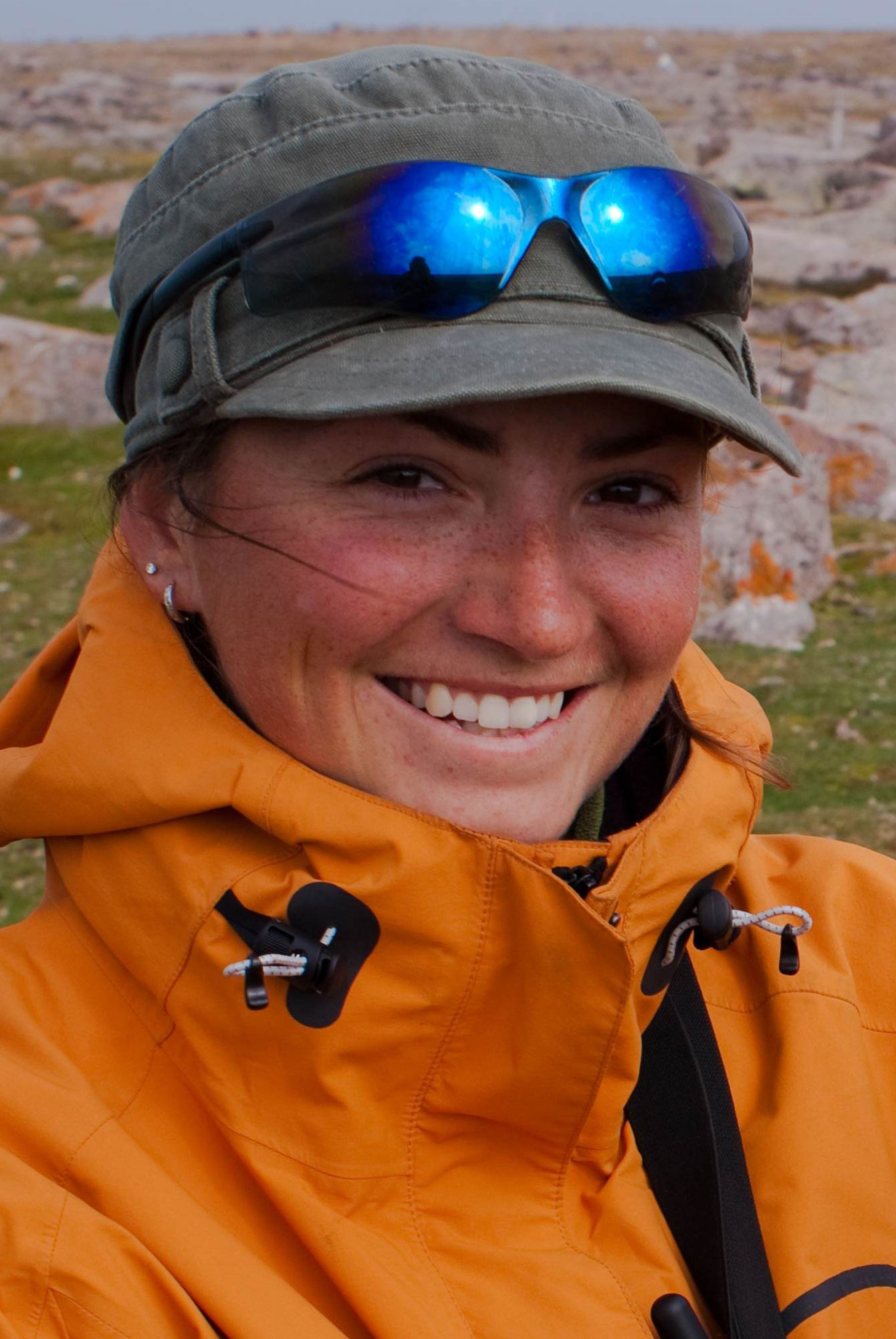If being stranded on a nearly deserted Arctic island for just about an entire summer sounds like your cup of tea, you’d get along swimmingly with Christie Macdonald.
A master’s student in biology originally from Stouffville, Ontario, Macdonald left at the end of May and spent three months at the East Bay Migratory Bird Sanctuary on Southampton Island, located in the northern portion of Hudson’s Bay about 2,500 km due north from here.
“It’s the most remote place I’ve ever been,” said MacDonald, who currently studies bird migration habits in the lab of assistant professor Oliver Love but earned an undergraduate degree at the University of British Columbia.
The closest town to her summer camp is in the Inuit community of Coral Harbour – population, 769. It’s about 70 km away but there are no roads to get there. She was stationed with six other student researchers from a variety of Canadian universities, but the only contact with the outside world was through shortwave radio or satellite phone.
“It’s definitely something you have to mentally prepare yourself for,” she said. “You feel very isolated but it gets your mind deeply involved and very focused on what you’re doing.”
 Macdonald researches the migratory patterns of the Arctic snow bunting, a small songbird whose population is believed to be currently in decline. Her work involves trapping birds and outfitting them with miniature tracking devices that pinpoint locations the birds have flown to over the winter.
Macdonald researches the migratory patterns of the Arctic snow bunting, a small songbird whose population is believed to be currently in decline. Her work involves trapping birds and outfitting them with miniature tracking devices that pinpoint locations the birds have flown to over the winter.
“They’re like little backpacks that fit over the bird’s rump,” Macdonald explained. “They only weigh 1.1 grams including the harness, so they’re quite light.”
In 2010, during her second trip to the island, she tagged about 50 birds, and another 40 this summer. When the birds return to the island, they’re re-trapped and a year’s worth of data can be downloaded from the device.
“With the information we get, we can determine the latitude and longitude of where the birds have travelled,” she said. “It’s accurate within about 100 km.”
Macdonald hopes the research will provide more knowledge to better protect natural habitats for the birds. And while the research is fascinating enough, just adapting to Arctic island life is an equally compelling part of her story.
The group staged out of Iqaluit where they bought about 4,000 pounds of food, which travelled with them for the three-hour flight via a Twin Otter to the island. The camp consists of a bunkhouse that sleeps eight, a kitchen tent and an outhouse, which no one ever went to without a shotgun, just in case of an encounter with a polar bear.
“We saw about 40 of them while we were there,” said Macdonald, who spent several summers working in animal care at the Toronto Zoo while still in high school and as an undergrad. “It’s amazing that these massive animals can creep up on you.”
Thankfully no one was hurt, but because of the location’s distance the researchers need to be extra cognizant about their health and safety.
“We’re very conscious about injuries,” she said. “A simple thing like a cut that gets infected could become a big problem.”
Hygiene was also an issue. The students would wash their clothes in buckets of hot water, take sponge baths or, on the odd occasion when the water gets up over one degree, they’ll make like polar bears and jump in the ocean for a very quick dip.
“There’s still icebergs usually floating by,” she said.
As for the isolation of the location, Macdonald said she got over it quickly when struck by the natural grandeur of the landscape.
“At first it looks like barren nothingness,” she said, “but it quickly becomes this place where you see endless sky and birds. It’s beautiful there.”

Editor's note: this is one of a series of articles about students who were engaged in cool research projects and other scholarly activities during the summer.

